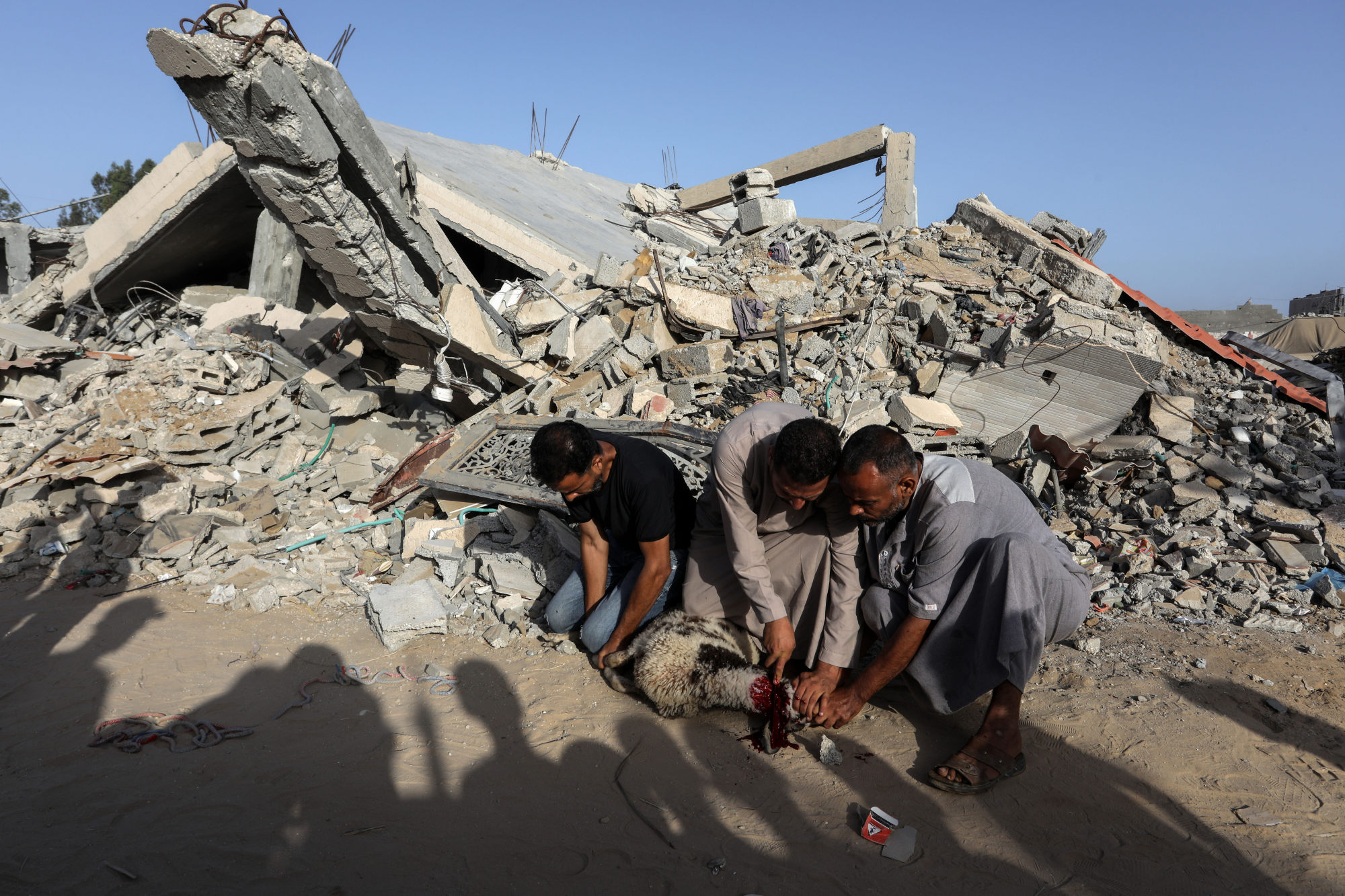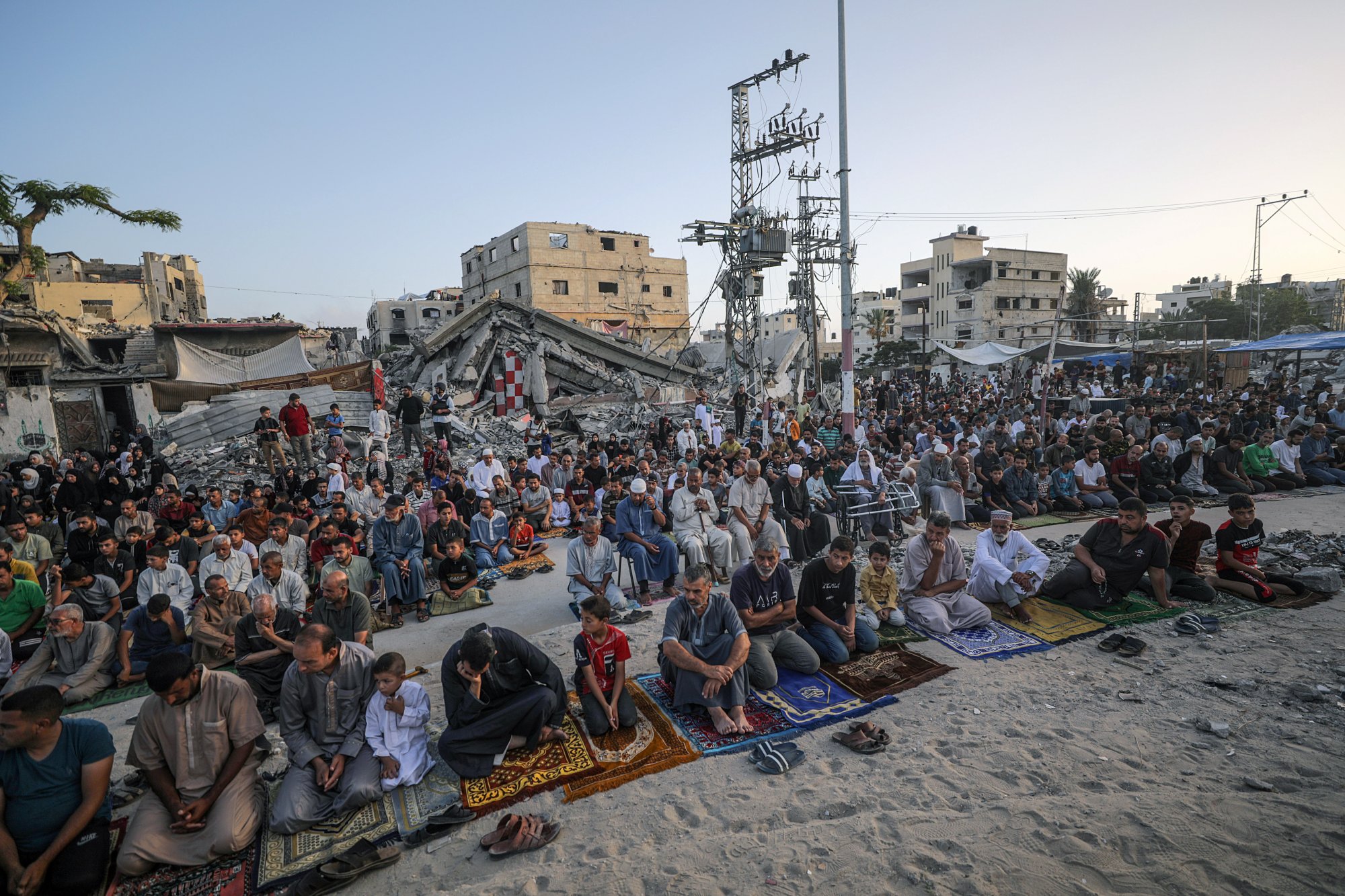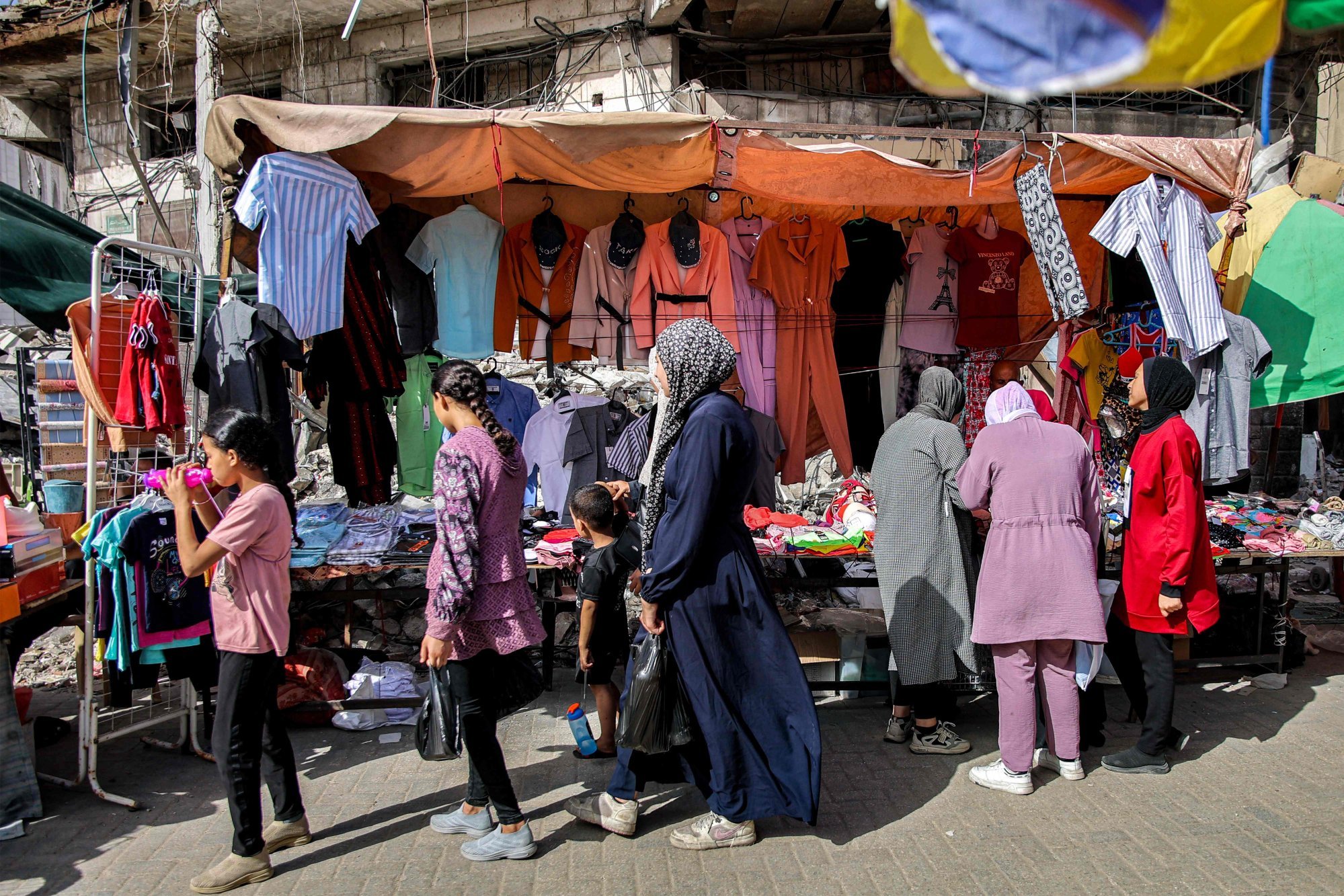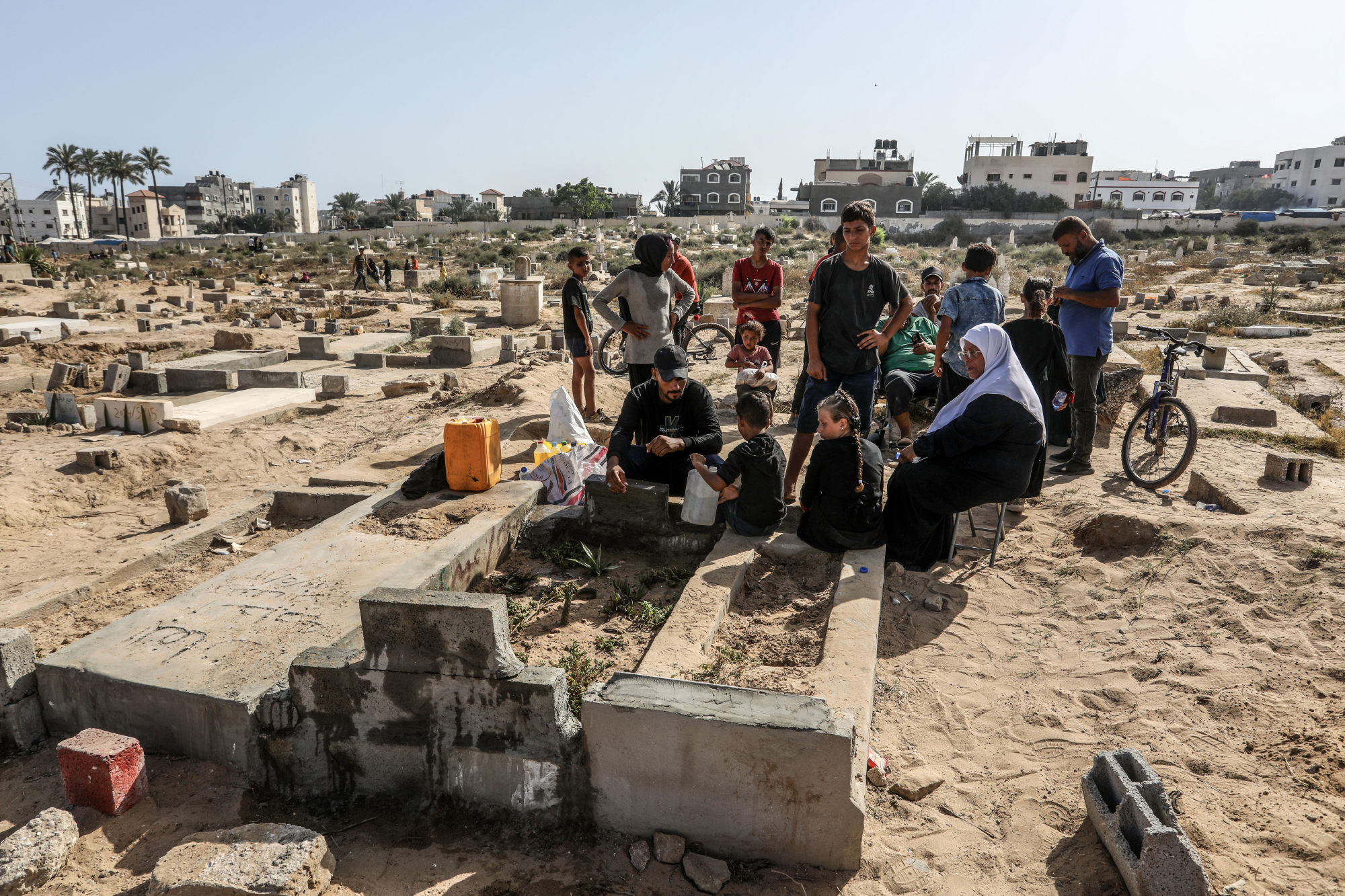Parents would also gift children new clothes and money in celebration.
But this year, after more than eight months of a devastating Israeli campaign that has flattened much of Gaza, displaced most of the besieged territory’s 2.4 million people and sparked repeated warnings of famine, the Eid is a day of misery for many.

“I hope the world will put pressure to end the war on us, because we are truly dying, and our children are broken,” Salman said.
Her family was displaced from the far-southern city of Rafah, a recent focus of the fighting which began after Hamas’ October 7 attack on southern Israel.
The military on Sunday morning announced a “tactical pause of military activity” around a Rafah-area route to facilitate the delivery of desperately needed humanitarian aid to Gazans.
There were no reports of strikes or shelling since dawn, though the Israeli military stressed there was “no cessation of hostilities in the southern Gaza Strip”.
The brief respite in fighting allowed worshippers a rare moment of calm on the holiday, which honours the prophet Abraham’s willingness to sacrifice his son before God offered a sheep instead.

Many gathered for the Eid al-Adha morning prayer in the courtyard of Gaza City’s historic Omari Mosque, which was heavily damaged in Israeli bombardment, placing down their frayed prayer mats next to mounds of rubble.
The sound of prayers travelled down some of the city’s destroyed and abandoned streets.
“Since this morning, we’ve felt a sudden calm with no gunfire or bombings … It’s strange,” said 30-year-old Haitham al-Ghura from Gaza City.
He said he hoped that the pause meant a permanent ceasefire was near, though truce mediation efforts have stalled for months.
In several areas of the war-battered territory, especially in Gaza City, young boys were seen manning roadside shops selling perfumes, lotions and other items against the backdrop of piles of rubble from destroyed buildings and homes.
Many vendors used umbrellas to protect themselves from the scorching sun as they sold household items on Gaza City’s main market street. But there were few buyers.

For many, a halt in fighting can never bring back what has been lost.
The deadliest-ever Gaza war began after Hamas’ unprecedented October 7 attack which resulted in the deaths of 1,194 people in Israel, mostly civilians, according to a tally based on Israeli official figures.
Israel’s retaliatory offensive has killed at least 37,296 people in Gaza, also mostly civilians, according to the health ministry in the Hamas-ruled territory.
“We’ve lost many people, there’s a lot of destruction,” said Umm Muhammad al-Katri from Jabalia refugee camp in northern Gaza.
“This Eid is completely different,” she said, with many Gazans forced to spend the holiday without their loved ones killed or displaced during the war.

Grieving families on Sunday flocked to cemeteries and other makeshift burial sites, where wooden planks marked the graves.
“I feel comfort here,” said Khalil Diab Essbiah at the cemetery where his two children are buried.
Even with the constant buzzing of Israeli drones overhead, visitors at the cemetery “can feel relieved of the genocide we are in and the death and destruction”, he said.
Hanaa Abu Jazar, 11, also displaced from Rafah to the tent city in Khan Younis, said: “We see the [Israeli] occupation killing children, women and the elderly.”
“How can we celebrate?” asked the girl.

